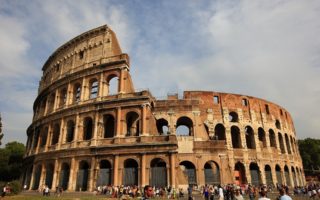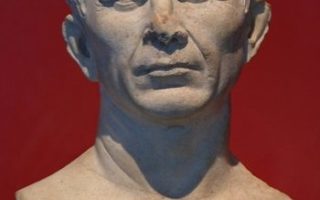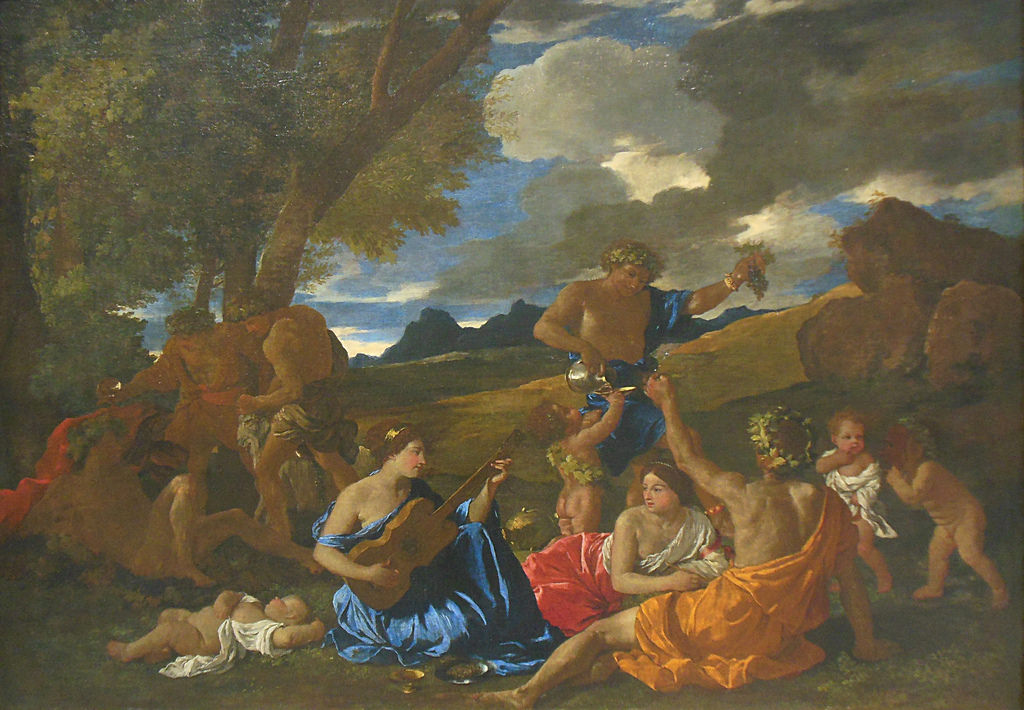Hi, today I am going to introduce you to the main lexicons of the Roman Empire, so I am going to introduce you to terms and their meanings. These will be classified by categories: politics, army, objects… and in alphabetical order from a to z. Good reading.
The Politics

In this part, I will focus on the titles given to the main holders of power under Ancient Rome.
Augustus / Roman Emperor: Title derived from Augustus carried by Roman Emperors.
Censor: Magistrate elected every 5 years with absolute power. Only another Censor can object to his decisions.
Caesar: Title worn by the Roman emperors from Julius Caesar.
Citizen: Person with Roman citizenship and the rights it offers.
Comices Curiates : Citizens gathered in an assembly of “curies”, deciding certain military facts, laws …
Comices tributes: Citizens deciding on the Roman tribes.
Consul: Roman magistrate elected for one year having civil and military powers and leading the Roman army.
Dictator: Magistrate in possession of all the powers.
Edile: Magistrate in charge of urban administration.
Forum: Public place where Roman citizens meet to decide on religious and commercial matters …
Legate: Person in charge of a mission outside Rome.
Magistrate: Representative elected by the people to represent them.
Pater patriae: Title given by the Senate to the Emperor meaning “father of the country”.
Pontifex maximus: Title given to the high priest.
Pretor: Magistrate equal to the Consuls, having judicial, civil and criminal powers.
Proconsul: Extension of the title of Consul corresponding to the functions of governor.
Owner: Extension of the title of Lender.
Quester: Magistrate looking after the public treasury and all the expenses of the Empire.
Senate: Assembly of senators having religious, financial, legislative and political powers.
The army
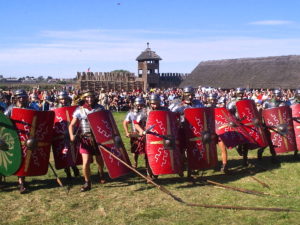
In this part, I will focus on the differents ranks in the Roman army, their different equipment used as well as some military terms.
Grade :
Centurion: Roman officer commanding around 100 legionaries.
Rider: Roman soldier on horseback.
Decurion: Officer equivalent to a centurion in charge of about thirty or even forty riders.
Legionnaire: Simple Roman soldier.
Banner bearer: Non-commissioned officer having to bear the legion’s standard.
Equipment :
Caligae: Leather sandals worn by soldiers. This is where the name of Emperor Caligula comes from.
Cassis : Iron helmet, composed of atria and a neck protector with sometimes a crest for centurions.
Galley: Rowing boat used in particular for naval battles.
Glavius: Short sword worn by Roman soldiers measuring between 60 and 90cm.
Hasta: Pike used by the Roman legions.
Lorica segmentata: Armor used by Roman soldiers composed of iron plates and leather thongs.
Pilum: Heavy Javelin used by the Romans.
Pugio: Kind of dagger worn by soldiers.
Scutum: Rectangular shield of more than 120 cm, made of wood with a piece of metal in its center.
Military terms :
Castrum: Military camp.
Centurie: Unit of around 100 soldiers.
Cohort: A division of a legion, comprising approximately 1,000 soldiers.
Banner : Symbol of the legion, carried by the standard bearer.
Legion: Unit of approximately 6000-7000 Roman soldiers.
Construction
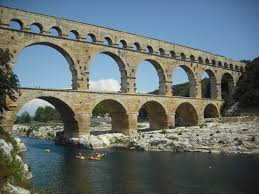
Here I am going to define the main Roman constructions for you.
Amphitheater: Large semi-circular construction, accommodating several hundred people for shows, theater.
Aqueduct: Construction allowing the transport of water from its source to a city.
Arena: Round shaped place, hosting races, shows of all kinds, with a capacity of a few thousand people.
Colosseum: Large oval-shaped building, accommodating tens of thousands of people for various shows.
Temple: Large stone buildings used for the worship of one or more deities.
Thermal baths: Place containing various pools of water, in which the Romans came to relax, discuss business …
Roman road: Road built by the Romans in order to travel faster and easier.
Period
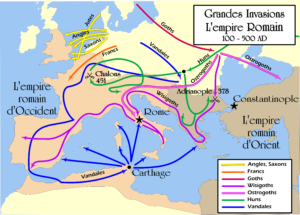
I will define here the periods of Ancient Rome (for this part, the terms are not listed in alphabetical order but not chronological order).
Roman royalty: This period spans from 753 BC (founding of Rome) to 509 BC when the last king: Tarquin the Superb was overthrown. During kingship, the Romans were ruled by a king.
Roman Republic: This period spanned from 509 BC (fall of the monarchy) to 27 BC, when Augustus was crowned as the first Roman Emperor. Under the republic, power was shared among several people. Their motto was “Senatus Populusque Romanus” (SPQR): the Senate and the people of Rome.
Roman Empire: This period extends from 27 BC (beginning of the reign of Augustus) to 476 AD (fall of the Western Roman Empire: the remaining half of the Empire).
Divinity
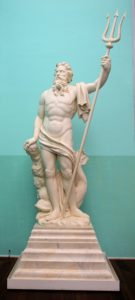
In this part, I will give you the main Roman Gods and their powers.
Apollo: God of music and poetry.
Bacchus: God of wine, festivals and drunkenness.
Ceres: Goddess of the harvest and the seasons.
Cupid: God of love.
Diane: Goddess of the hunt.
Fortuna: Goddess of luck.
Juno: Goddess of marriage and women.
Jupiter: King of the Gods, gods of lightning, of the sky and of men.
Mars: God of war.
Mercury: God of travelers, messengers and merchants.
Minerva: Goddess of wisdom.
Neptune: God of seas, oceans, earthquakes and horses.
Pluto: God of the underworld and of wealth.
Saturn: God of time.
Tellus / Tella: Goddess of the earth.
Uranus: God of the sky.
Vesta: Goddess of home and family.
Vulcan: God of fire, volcanoes and the forge.
Various objects
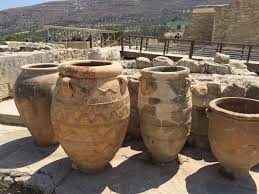
In this part, I will introduce you to some of the most famous Roman objects.
Amphora: Container used to contain liquids such as wine, water … or even food, fish … They were made in several forms, each specific to its use.
Dodecahedron: Roman object with 12 bronze faces. Although several assumptions about its use as a thimble, candlestick, religious object … have been proposed, we do not know its real use.
Fibulas: Object resembling a safety pin, used to hold clothes such as capes.
Oil lamp: Object used to light up by consuming a wick and oil. The oil lamp is generally made of terracotta and more rarely of bronze, silver or gold.
So much for the lexicon of the Roman Empire. Obviously, this list is not exhaustive but I have included the main words. I hope you enjoyed this article. Also, don’t hesitate to put in the comments if you have discovered words that you did not know. Next week’s article will be “5 Roman Copper Coins.” See you next week !
Receive my free book Around the Roman Coin by clicking here


